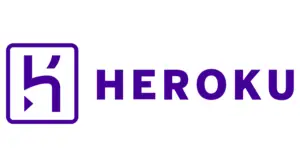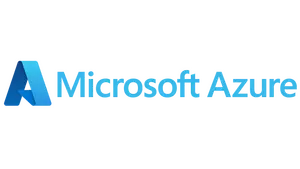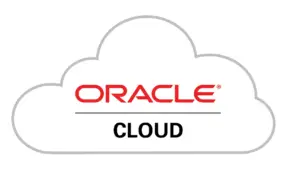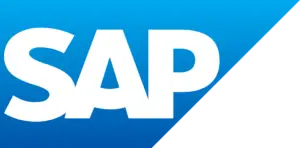The term “platform as a service,” or “PaaS,” refers to cloud computing services that rely on virtualization to provide application development and deployment platforms to companies. PaaS is one of the four basic cloud services, which also include infrastructure as a service (IaaS), function as a service (FaaS), and software as a service (SaaS).
PaaS is a cost-effective option that accelerates software development and gives you access to up-to-date resources at an affordable price. For those currently looking for a PaaS provider, I thought I’d share some examples of PaaS companies and their defining attributes.
Here are some of the top PaaS companies and their key features:
Top PaaS Companies
The first example of a PaaS company is Amazon Web Services — a popular PaaS company offering a wide range of cloud services. AWS is a cloud-based program that helps businesses build solutions through integrated web services.
You can rely on Amazon Web Services to set up and run website apps using different programming languages like Python, Java, PHP, C++, .NET, and Ruby, to mention a few. The platform is also easy to use since you can upload your code on the user-friendly interface and leave everything else to AWS.
When you subscribe, they will grant you access to AWS Elastic Beanstalk. Elastic Beanstalk makes it easy for developers to deploy services. You upload your applications to the server and AWS takes care of the rest, including load balancing, capacity provisioning, auto-scaling, and more. Amazon Web Services will scale your resources based on your needs.
There are three different pricing models available when using Amazon Web Services. You can choose pay-as-you-go, pay less by using more, and save when you commit. The different pricing models, hybrid solutions, and variety of features that Amazon Web Services offers make it a worthwhile investment. Overall, these factors combined with deep integration can provide significant advantages to your business.
Heroku is a PaaS company that offers many services targeted to monitoring and scaling apps. Regardless of the size of the company, Heroku allows the company to benefit from the full value of the app they are creating. It eliminates the headache of hardware and servers to help deliver the best experience.
Heroku runs on programming languages that are used in modern apps. For example, Node.js, Ruby, Java, Python, Scala, PHP, and many more. Heroku focuses on simplifying the process of deploying, configuring, scaling, and managing so developers can focus on building great apps that will attract consumers.
Heroku’s ecosystem is designed to extend applications as needed. Once an app is ready to expand, Heroku Add-ons are fully managed services that can be used to scale the app. There are over 200 options available, ranging from messaging services, to uptime alerters, to automatic backups.
Heroku is a part of the Salesforce Platform that allows companies to sync data between the two platforms. This provides the opportunity for companies to build innovative apps that span both platforms and combine the capabilities that each platform has.
Besides Microsoft Azure offering a platform as a service, it also offers software as a service. When using Azure, you can use the services on the cloud or connect with existing applications in your organization. Clients hold Microsoft Azure in high regard due to the reputed cloud capabilities it offers.
As most cloud providers struggle with the blurred lines between IaaS and PaaS, Microsoft Azure understands the difference and can mix and match both services to meet your company’s goals. The platform offers PaaS on the same infrastructure as Azure IaaS and SaaS. You can use it to deploy different managed and provisioned infrastructures as a PaaS solution. Thus, it is adaptable and versatile to fit your business needs like web hosting, storage, and networking.
Microsoft Azure will manage your platform needs, ensuring your company focuses on its specialty rather than technical software details. The platform also offers you a chance to move your servers from the business premises, reducing costs. In the same way, you will also reduce on-site support and the associated overhead expenses because the Microsoft Azure team manages those needs.
Microsoft Azure offers a free trial period and has a price estimation tool to give you an idea of cost. The detailed pricing of their services without hidden costs is available on their website, making it easy for you to decide. The competitive pricing, multiple features, and on-premises hybrid functions are a few reasons that Microsoft Azure stands out to users.
If you are searching for a reliable and experienced company to meet your PaaS needs, you might consider Google App Engine. Google App Engine is a highly intuitive engine that can manage your resources and enable you to build applications on a serverless platform.
Relying on Google Web Services, you can develop a highly customized solution that meets your organization’s needs — including application development and managing in-built services like user management. Google App Engine can run and manage hosting, monitoring, and scaling.
Since Google Cloud relies on Linux, learning Linux ahead of time will make the process of setting up gateways and firewalls smoother. The cloud enables you to build applications regardless of the underlying infrastructure, making it ideal even for start-up companies. They also manage the serverless platform, taking the complex configuration development tasks off your hands.
With years of experience in the industry, the Google App Engine offers enhanced execution and impeccable services. Their commitment to constant development will give your business the competitive edge it needs to beat competitors. If you recently started your business, you’ll also get more time to focus on the business instead of on hiring developers, developing apps, or maintaining the core stack.
Salesforce Lightning is a PaaS offered by Salesforce to help take your CRM to the next level. You can personalize apps and brand your employee experience all with this platform. It’s really as easy as dragging and dropping components to create pages and responsive apps.
The Lightning platform also gives you access to customize the digital experiences needed for your company. You could extend apps, data, and business processes to your stakeholders. You could also integrate CMS content and use that to personalize the experience with the data provided by the CRM. However you choose your personalized experience, deploy it quickly with an ecosystem of prebuilt themes.
One of the highlights of Salesforce Lightning is that you can turn spreadsheets from Microsoft Excel, Google Sheets, and Quip Spreadsheets into cloud-based applications.
DigitalOcean provides a streamlined environment for developers to build, deploy, and scale web applications quickly and efficiently. It simplifies many of the complex issues by offering a fully managed platform that supports various programming languages, frameworks, and containers. The platform handles much of the operational heavy lifting, such as load balancing, SSL management, and monitoring, allowing developers to focus more on writing code than managing servers or infrastructure.
One of DigitalOcean’s key features is its scalability. It allows applications to automatically scale based on demand, and it provides both vertical scaling (adjusting resources like CPU and memory) and horizontal scaling (adding more instances).
It also integrates seamlessly with other DigitalOcean services, such as databases, object storage (Spaces), and Kubernetes, making it easy for developers to build complex architectures without managing each piece manually.
DigitalOcean offers cost efficient plans, which makes it available to startups, small businesses, and developers looking to quickly deploy and scale applications in a
Oracle Cloud Platform has changed the way cloud computing is engineered. Instead of focusing on creating clouds, Oracle solves issues to existing public clouds. It seeks to accelerate migrations while delivering better reliability across all applications.
Oracle Cloud prides itself on easily migrating enterprise workloads, providing all native cloud applications, automating services to help improve optimization, deploying options for hybrid cloud strategies, incorporating security into their services (not just tacked on), and offering exceptionally priced performance.
Oracle Cloud has a free tier service that can be used for an unlimited time. In addition, you can purchase a $300 cloud credit that you will have for 30 days. After the 30-day trial period is complete, you can then transition into a full-time use of Oracle.
Adobe Commerce is a secure and scalable platform created for rapid innovation. It uses API-first services, developer tools, and comprehensive cloud services. Adobe Commerce focuses on the modern developer and the need for faster downloads, streamlining data, and reducing maintenance costs.
Adobe’s composable services help developers stay up to date by combining multiple sources of API into a single graph, extending API, and securing API in a distributed environment. This creates a shorter time period of developing and reduces maintenance costs.
If you want to extend your capabilities, Adobe Commerce integrates third-party services to build the experience. It also helps you build apps with modern developer tools that provide an “outside the box” experience. You can also create real-time systems that help with order management and ERPs.
Adobe Commerce allows for scalability and supports high traffic apps and responsive customer experiences. You can deliver new features faster and maximize your performance with the tools provided. You can also protect your features with extensive security features and processes.
SAP HANA Cloud is an open PaaS that includes in-memory SAP HANA database and connects to on-premise and cloud-based systems that run on SAP or other third-party software such as Java, JavaScript, and Node. It allows architects to develop and scale advanced data applications.
It provides essentially limitless databases for any workload. SAP goes beyond the normal data and focuses on intelligent data that help developers use generative AI to build intelligent apps. SAP Cloud allows you to manage data and analytics through machine learning and other integrated data tiering support enhanced services.
SAP Cloud uses a multi-model processing for security. You can also prioritize your business needs by the use of multi-tiering. With this approach, you can configure data across your entire business landscape and let the analytics experts think more strategically on how to achieve company goals.
Another popular example of a PaaS company is IBM Cloud Foundry, which aims to help organizations connect their infrastructure, applications, and data seamlessly. IBM Cloud Foundry brings web application capability to data centers in Kubernetes containers.
When using IBM, you can easily sync data to work both on-premises and on the cloud. You can also combine APIs to make it easy to work across different applications. With pre-built templates for different workflows, you can automate your processes and even combine different templates. For example, you can have the sales data from one application automatically sent to an email application to create better communication.
Designed for all industries, IBM offers the security and freedom your company needs to build and develop reliable infrastructure. The robust technology and automated processes provide the value your business needs. With consistent application development and easy integration, it’s clear why IBM ranks among the top examples of PaaS service providers.
Red Hat OpenShift is a hybrid cloud application platform that is powered by Kubernetes. It provides a consistent experience across public cloud, on-premise, hybrid cloud, or edge architecture.
OpenShift works with existing or new applications. It supports workloads such as AI/ML, Edge, and others. OpenShift allows you to decide if you want to fully manage the application or if you want them to manage the application. Regardless of how you want to manage your application, OpenShift will work to make you successful.
If you choose to manage it yourself, OpenShift has a deployment option called Red Hat OpenShift Platform Plus that can be installed whether on premise or via the cloud to help with that structure. The self-managing option allows you to choose your level of control and security.
OpenShift also offers the option for them to manage your application. If you choose that option, you can benefit from other major cloud providers such as AWS, Microsoft Azure, Google Cloud, and IBM. You choose the cloud provider, and OpenShift will help you build and deploy your application.
Pivotal Cloud Foundry is a multi-cloud open-source that allows teams to run applications on multiple cloud platforms such as AWS, Google Cloud, Microsoft Azure. Pivotal Software is owned by VMware.
Pivotal Cloud Foundry is instrumental when developers are looking to deploy applications with the flexibility to go from one cloud service to the other. It allows you to shift workloads between the platforms without having to change any code. It runs on popular codes such as PHP, Python, Java, and Ruby.
Some benefits of using Pivotal Cloud Foundry come into play when there is a need for faster development iteration. It is easy to duplicate something from one cloud to the other when you have a platform that already has the code stored. This allows for greater productivity. It takes less time to complete tasks because the platform can be used across cloud services.
Types of PaaS
There are many types of PaaS, and knowing which PaaS to use for your company is important. You must first understand the goal of the application, then choose the type of platform that will best meet your goal. Here are some common types of PaaS that you can use to help run your application.
- Public PaaS
- Private PaaS
- Hybrid PaaS
- Mobile PaaS
- Open Paas
1. Public PaaS
If you are working in a public cloud, this is the best model for you. In this type of PaaS, you will be able to control your software deployment, and the cloud provider will manage the delivery of other IT components.
Public PaaS vendors provide options that allow developers to control the servers without having to set up infrastructure. Therefore, the PaaS will run on top of the vendor’s IaaS while using the public cloud. This does mean that the user will only be able to work in a single public cloud.
Many small- to medium-sized businesses will use public PaaS because of the availability of an outside company taking care of much of the IT components, but big organizations usually avoid public PaaS because of its restrictions.
2. Private PaaS
Private PaaS maintains a level of agility of a public PaaS while offering a level of security, benefits, and lower costs of a private data center. A private PaaS can be used in any infrastructure and can work within a specific private cloud.
This type of PaaS helps organizations to serve developers better by improving the use of internal resources and reducing the costs of the public cloud. Companies can better manage their applications by adhering to strict security and privacy restrictions.
3. Hybrid PaaS
A hybrid PaaS combines public and private PaaS and allows companies to choose its flexibility provided the public PaaS and the cost efficiency and control of the private PaaS. A hybrid PaaS also uses a hybrid cloud.
4. Mobile PaaS
A mobile PaaS is used to configure mobile apps. You do not need to have any coding skills, and it is delivered through a web browser that supports a public and private cloud. The service for a mobile PaaS is usually leased with a subscription per month depending on the number of devices and features.
Mobile PaaS usually has a drag-and-drop interface that lets the user develop apps with direct access to features such as the device’s GPS, camera, and microphone.
Mobile PaaS is often used to create apps that will be used by internal developers and consumers. This is a practical platform when you’re trying to service two different types of users. It usually doesn’t require extra mobile app developers or IT support.
5. Open PaaS
An Open PaaS, or open-source platform, controls apps such as calendars, contacts, and mail apps. It is designed to help users deploy new apps. Open PaaS works best on applications used on hybrid clouds.
Additional Resources
If you enjoyed this article, I recommend joining my email newsletter. You’ll be notified when I publish other articles and helpful guides for improving your SaaS business. Submit the form below to sign up. Also, use the email icon below to share this article with someone else who might find it useful.
If you’re the founder and CEO of a SaaS company looking for help in developing a distribution channel strategy, please Click Here for more info.
How to Scale and Grow a SaaS Business













This post on PaaS companies is incredibly insightful! I appreciate the updated examples for 2025 and how they highlight the evolving landscape of development platforms. It’s interesting to see how these companies are enhancing scalability and integration capabilities. Looking forward to seeing how these trends continue to shape the industry!
Pingback: Examples of IaaS Companies